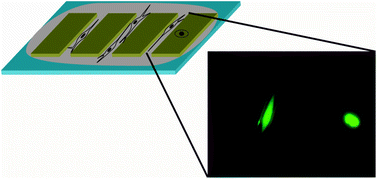Controllable cell adhesion, growth and orientation on layered silk protein films†
Abstract
Due to their mechanical stability, biocompatibility and biodegradability, silks are promising materials for various biomedical applications including tissue engineering. Since the shape and the organisation of cells in and on scaffolds both affect their function, we tested patterned silk scaffolds made of three different silk

- This article is part of the themed collection: Silk and silk-inspired materials

 Please wait while we load your content...
Please wait while we load your content...